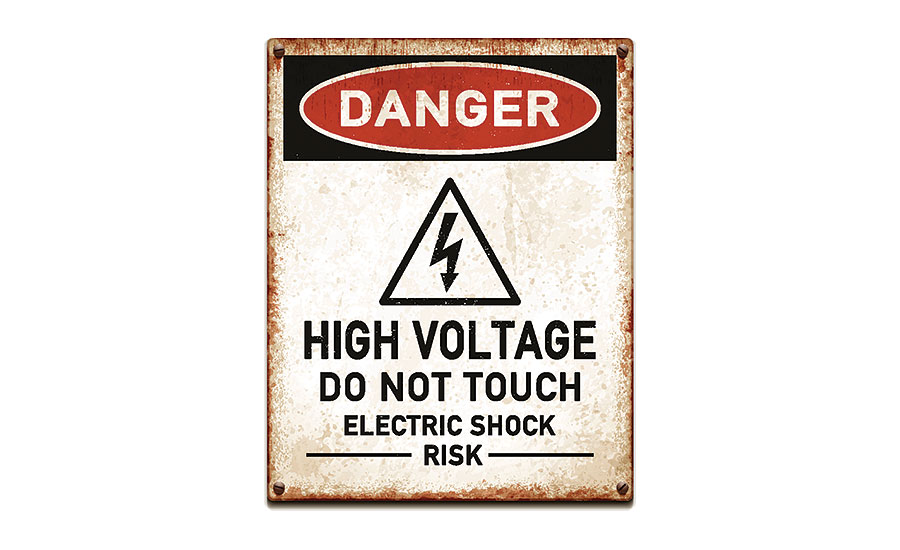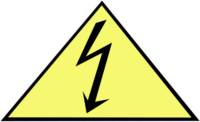For workers on the factory floor, machinery and high-voltage systems can pose serious safety risks. According to OSHA, electrocutions are one of the “fatal four” — the leading causes of fatalities in the workplace.
Simple safety practices and layout changes can make a major difference in any factory. With the right program, factory managers can help protect workers from common electrical hazards.
When revisiting safety guidelines, it’s common for factory managers to begin with a site safety audit. This is a review of all the potential threats a worker may face while in the factory.
No matter what specific equipment or systems a factory relies on, there are certain best practices that can always help reduce the risk electrical equipment poses.
Most accidents involving electricity involve worker error or equipment malfunction. Equipment malfunction can be caused by improper installation, poor maintenance, or improper use.
In some cases, accidents will be caused or made worse by an unsafe working environment.
During the audit, factory managers should direct the audit team to look out for these three factors: unsafe worker practices, unsafe equipment, and an unsafe working environment.
This audit will give you a chance to measure compliance with existing work practices, as well as the qualifications of workers who are at the highest risk of electrocution.
Workers who are authorized to lock out machines and factory equipment, for example, also tend to be those who interact with electric components most often. You and your team should ensure they are trained in the recognition of electrical safety hazards in the workplace.
These workers should also be able to identify the type and magnitude of energy used in the workplace, and how they can control and isolate it safely.
The audit is also the best time to evaluate the knowledge of all other factory workers and identify whether any training on electrical safety will be necessary.
It’s also important to review enclosures and other essential electrical factory components during the audit. Are all enclosures properly secured if not in use? Are all proper lockout/tagout (LO/TO) procedures being followed?
A review of dangerous equipment may also reveal layout issues that are creating a dangerous work environment.
For example, you may discover that an enclosure is positioned in such a way that it can’t be opened without impeding factory traffic. The enclosure could pose a safety risk to workers while opened for maintenance.
Best practices for electrical work in factories
Knowing how to handle these three factors will help a factory owner mitigate some of the most serious risks.
Unsafe work practices will need to be resolved with better training and management of employees. If your factory doesn’t have an electrical hazards training course, it may need one — especially if the audit revealed that a number of factory workers practiced unsafe habits around electricity and electrical equipment.
Before workers engage in any task involving electricity, they should be able to gauge the potential risk of the task and determine whether they are equipped to handle those risks. They should review the training they’ve received, the tools and protective equipment they have access to, and the safety procedures they should follow.
For example, are your employees able to identify a power supply and understand how it works? If so, do they know what kinds of risks the power supply may pose while it’s in use?
Effective training may also teach workers to identify whether equipment like power supplies, conductors, and circuits are in good working order, and if electrical components are properly guarded to prevent contact or arcing. Workers who are most exposed to electrical risks — often those authorized to perform LO/TO — may need additional or specialized training.
A culture of electrical safety
Building a culture of safety in the workplace will be the best way to ensure these practices are followed in day-to-day work. New workers will look to more experienced workers and their immediate supervisors for guidance. They’re also likely to pick up many of the work habits that their supervisors practice.
If these workers follow site safety procedures, new workers may be more likely to follow them as well.
Providing the time and resources needed to follow safety practices will also be important. If workers are sure they can take extra time to follow these basic precautions, they may be less likely to cut corners.
Layout changes and maintaining safe practices
In some cases, more significant changes to layout and site equipment may be necessary to encourage safe working practices. Faulty insulation, improper grounding, loose connections, and exposed wires should also be repaired as quickly as possible.
Maintaining safe work practices will also be an ongoing effort. Regular auditing can help you catch potential safety issues and measure compliance with site guidelines. Ongoing training will also be essential — both new workers and experienced team members will need additional training to make their work as safe as possible.




